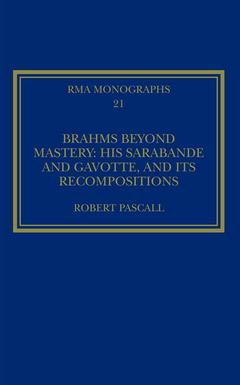Description
Brahms Beyond Mastery
His Sarabande and Gavotte, and its Recompositions
Royal Musical Association Monographs Series
Author: Pascall Robert
Language: English
Keywords
String Sextet; Plagal Cadences; Neighbour Note Figure; quintet; Violin II; Rounded Binary Form; Clarinet Quintet; String Quintet; Ein Deutsches Requiem; Half Cadence; Brahms’s Hand; Minor Fugue; Dona Nobis Pacem; Mozart Clarinet Quintet; Eusebius Mandyczewski; Bach’s Sarabande; Allegretto Vivace; Hungarian Gypsy Music; Normal Speed Range; Cadential Chord; Piano Trio; Schubert’s Music; Piano Quintet; Cello Sonata; Brahms’s Composition; Vice Versa
· 15x24.4 cm · Hardback
Description
/li>Contents
/li>Biography
/li>
These books may interest you

Nineteenth-Century Piano Music 160.25 €



